Colin McCrate's Blog, page 14
September 1, 2017
Encyclopedia Botanica Podcast, Episode 60: Season Extension with Guest Niki Jabbour

In this episode we chat with Nova Scotia resident and edible gardening expert Niki Jabbour about season extension. Niki believes that a long Canadian winter shouldn’t mean an end to the homegrown harvest and is here to share simple tricks and pro-tips that we can also use to extend our harvests into the winter and early spring, no matter what part of the courtry you may be growing in.
HOW TO LISTEN:Subscribe in iTunes (or your favorite podcast player) to have our podcasts sent directly to your device.Listen right now in your browser by clicking above.SHOW NOTES:In this episode, we discuss:
Niki’s favorite winter cropsSeason extension infrastructureTips for a successful winter harvest
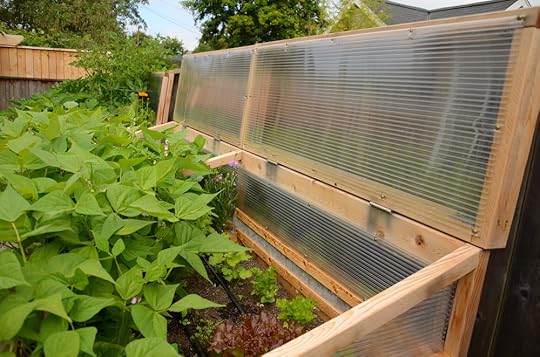
Important Take-aways:
Plan ahead: As we’ve mentioned in previous episodes, it’s crucial that you get your crops established BEFORE the cool, short days of winter kick in.
Cold frames: Cold frames are especially useful in snowy climates because they’ll hold up under the weight of the snow.
Greenhouse poly cold-frames: One of Niki’s pro-tips is to use greenhouse poly instead of glass when making a cold frame. She suggests that you can still re-use old windows if you don’t want to build new frames, but that knocking out the glass and replacing it with greenhouse poly will save you from a big mess later down the road.
Polycarbonate panels: These also make great cold-frame covers, and is the material that we use when building new, custom cold-frames for Seattle Urban Farm Co. clients.
Row cover: Row cover is an inexpensive garden tool with multiple applications, from pest exclusion to season extension. In milder climates, row covers are an excellent season extension tool because the floating fabric will protect your crops from light frost, which will extend the life of your semi-cold hardy crops and enable you to extend the harvest period of your cold-hardy crops. In many cases, the row cover fabric is draped over a series of short hoops to make what’s referred to as a “low tunnel”. Row covers some in a variety of weights, and for season extension, you’ll want one that still lets light in but is heavy enough to protect the plants from the cold. Greenhouse poly can also be used over low tunnels to protect winter crops.
Don’t harvest frozen crops: With the exception of kale, harvesting frozen crops will result in a big pile of mush once they’ve warmed up. Wait until the warmest hours of the day to harvest your winter crops.The following photos were taken by Nik Jabbour and show some of the infrastructure we discuss holding up to a Nova Scotia winter!

Poly low-tunnels under snow

Cold frame with polycarbonate panels

Open cold frame with polycarbonate panels
Like what you hear? Please share our podcast with a friend. Subscribe on iTunes or your favorite podcast player so you never miss a beat. And we'd really appreciate you showing us some love by leaving a rating and review on iTunes.
Have a topic you'd like see us dig in to? Leave us a note in the comment section below or #EBpodcast on Instagram and Twitter!
We need your support to keep make fresh, quality weekly content! Support us here:
Become an Encyclopedia Botanica Patreon
More about our special guest:

Photo from The Year Round Vegetable Gardener, taken by Joseph DeSciose
Niki is an award-winning author and edibles expert from Halifax, Nova Scotia, who believes that a long Canadian winter shouldn’t mean an end to the homegrown harvest. Niki grows dozens of different vegetable varieties in her 2,000-square-foot garden, including experimental crops like quinoa, peanuts, artichokes and figs. Niki’s unconventional – yet wildly successful – growing techniques are proof that elbow-deep snow is not, in fact, a valid excuse for a puny parsnip harvest. Her first book, The Year Round Vegetable Gardener, was honored with the 2012 American Horticultural Society’s Book Award, and her latest title, Groundbreaking Food Gardens: 73 Plans That Will Change the Way You Grow Your Garden (Storey Publishing, 2014) opens your eyes to an infinite number of tasty possibilities. Look for her next book, Niki Jabbour’s Veggie Garden Remix in January 2018.
Niki's gardening blog, SavvyGardening, just won Best Overall Garden Blog and Best Digital Media from the GWA, the Association for Garden Communicators!
www.savvygardening.com
Instagram: @nikijabbour
August 25, 2017
Encyclopedia Botanica Podcast, Episode 59: Crops That Mature In 40 Days Or Less

It may not feel like it, but the clock is ticking quickly toward the first frost of Fall. This means your planting options are much more limited than they are earlier in the season, but there are still many crops that mature quickly and can be planted ahead of frost arriving in your garden. This episode includes a round-up of crops that mature in 40 days or less. We picked 40 days because there are very few crops that can mature in fewer than this many days, but it is still a short enough period (just over a month) that it is easy to plan for and execute even in the waning days of the summer. Consider this your last call for planting and get out there and sow some seeds!
Hey guys! We’re so grateful for the sustaining contributions from our Patreon supporters and the community that you’re helping to build in our Club EB Slack group. We seriously could not continue to make this podcast without your continued support! This podcast is our passion project and we love sharing all of this gardening know-how will all of you. Today we are asking for you to consider supporting the podcast in a different way - with a one-time contribution during our summer fund drive! If you appreciate our mission to inspire everyone to grow their own fruits and vegetables, please consider showing your support with a donation. All proceeds go directly towards the Encyclopedia Botanica Podcast and will allow us to keep creating educational gardening content. The fund drive runs through the end of August, and every little bit helps, so please consider making a one-time contribution today!
Thanks, Hilary and Kellie
Encyclopedia Botanica Fall Fund Drive
HOW TO LISTEN:Subscribe in iTunes (or your favorite podcast player) to have our podcasts sent directly to your device.Listen right now in your browser by clicking above.SHOW NOTES:
In this episode, we discuss:
Short season crops that thrive in the fallGrowing and harvesting crops for late-summer seeded crops.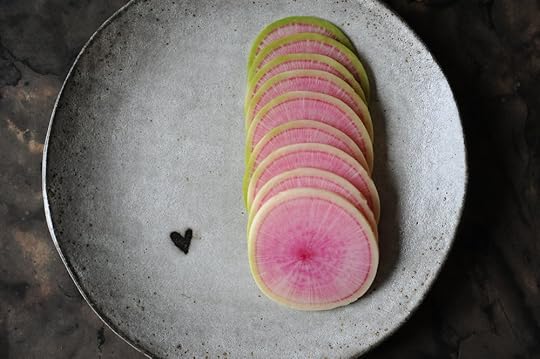


Important Take-aways:
Radishes: Radishes can be ready to harvest in as little as 20 days after direct seeding. All radish varieties will grow well in late summer and early fall, and there are also varieties that will only grow reliably in fall conditions, including watermelon radish, daikon, and nero tondo.
Turnips: Turnips are one of the most reliable fall crops. The traditional type is called Purple Top White Globe, which grow wonderfully in the fall.
Mustard Greens: There are seemingly endless varieties of mustard greens to choose from. Varieties we recommend are mizuna, green wave, and minutina, as well as purple-leaved types including purple mizuna, ruby streaks, scarlet frills and red wave. Mustards grow quickly and are also very cold and frost tolerant.
Arugula: Arugula can be ready to harvest in as little as 30 days after seeding. There are many varieties to choose from, and arugula is surprisingly cold tolerant.
Cilantro: Growing cilantro late in the season is the best because it is much slower to bolt and holds a lot longer in the garden than in the spring and summer. It can also survive through frost and makes a great winter crop.
Spinach: probably the most cold hardy, commonly grown salad green. We just did an episode on spinach so I won’t say too much about it here except that it can easily grow to maturity in 40 days, so get planting!
Lettuce Mix: Lettuce mix will germinate and grow better in late summer / early fall conditions and may be able to provide 2 harvests if planted with 40+ days left. It does not survive frost well, so harvest all of your baby lettuce if frosts are imminent.
Baby Beets: Some varieties of beets, like Babybeat, can mature to baby size in 40 days. Any type can be grown as a baby beet if harvested at baby size, they just may not be shaped up. Beets do not tolerate frost well, so harvest all of your crop before the first frost.
Pac Choi: There are many types of Bok choi and some types take 60+ days to mature. However, some baby types can be ready in 30 days; one favorite is Shiro which can be ready in 30 days!
Kohlrabi (Honorable Mention): Technically, kohlrabi takes about 45-50 days to mature, but it grows very well in fall weather and if you don’t mind picking it a little small it is likely to be full size or almost full size within 40 days. Make sure to pick fresh eating types (not storage types); our favorite is the purple type called Kolibri.
Our friends at Seattle Seed Co. carry many of these varieties, so take advantage of your Encyclopedia Botanica Podcast listeners discount by using the code EBPODCAST to get 15% off your order at Seattle Seed Co. anytime!
Encyclopedia Botanica Fall Fund Drive
Like what you hear? Please share our podcast with a friend. Subscribe on iTunes or your favorite podcast player so you never miss a beat. And we'd really appreciate you showing us some love by leaving a rating and review on iTunes.
Have a topic you'd like see us dig in to? Leave us a note in the comment section below or #EBpodcast on Instagram and Twitter!
We need your support to keep make fresh, quality weekly content! Support us here:
Become an Encyclopedia Botanica Patreon
August 18, 2017
Encyclopedia Botanica Podcast, Episode 58: Spinach
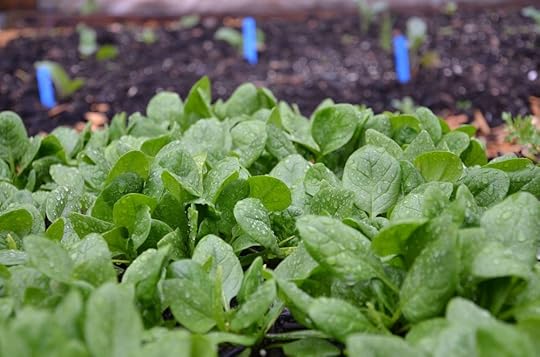
Spinach is an annual that grows to maturity in about 25-40 days. It is a hardy cool-season crop that does best at temperatures of 60 to 65ºF, but can withstand temperatures as low as 20ºF. Spinach is intolerant of temperatures above 77ºF, these warm temperatures combined with long days initiate the plants reproductive stage, causing it to bolt or flower prematurely. That means that spinach thrives when planted early in the spring for a late spring harvest, and late in the summer for a fall harvest.
Hey guys! We’re so grateful for the sustaining contributions from our Patreon supporters and the community that you’re helping to build in our Club EB Slack group. We seriously could not continue to make this podcast without your continued support! This podcast is our passion project and we love sharing all of this gardening know-how will all of you. Today we are asking for you to consider supporting the podcast in a different way - with a one-time contribution during our summer fund drive! If you appreciate our mission to inspire everyone to grow their own fruits and vegetables, please consider showing your support with a donation. All proceeds go directly towards the Encyclopedia Botanica Podcast and will allow us to keep creating educational gardening content. The fund drive runs through the end of August, and every little bit helps, so please consider making a one-time contribution today!
Thanks, Hilary and Kellie
Encyclopedia Botanica Fall Fund Drive
HOW TO LISTEN:Subscribe in iTunes (or your favorite podcast player) to have our podcasts sent directly to your device.Listen right now in your browser by clicking above.SHOW NOTES:
In this episode, we discuss:
The 3 basic types of spinachGermination tips for sowing spinach in summer for a Fall harvestDifferent ways you can harvest spinachHow to overwinter spinach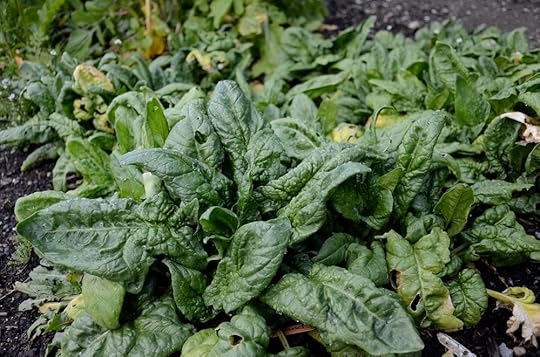
Overwintered spring spinach

Frost on spinach

Bolting spinach
Important Take-aways:
There are 3 basic types of spinach, savoy, flat leaf, and semi-savoy. Savoy-types have crinkled leaves and are usually grown in the fall because the leaves are thicker than other types so it holds up well in cold weather. Flat leaf varieties have smooth, broad leaves and tend to be grown in the spring.
Most spinach varieties germinate well in cool weather, but seeding for winter production occurs at the warmest time of the year, when spinach traditionally performs poorly. Keeping the seeds moist helps cool down the soil temperature, which improves germination of direct-seeded plantings. Spinach can also be started as transplants for the Fall, which means the seeds can be germinated in a cool, controlled environment, and then planted out as transplants.
Spinach can be grown and harvested in both a baby leaf form and a large leaf form. To grow baby spinach, direct seed at a rate of about 4 seeds per inch and do not thin the plants after they’ve germinated. Harvest the baby spinach as cut-and-come-again greens. If you’re planning to harvest large leaf spinach for cooking greens, transplant and/or thin the plants down to 1 plant per 4 inches.
For successful overwintering, it is important that you thin your spinach to decrease competition between plants and increase air circulation. Once your spinach has developed 3 sets of leaves, thin seedlings to 4-6” apart. Spinach can withstand hard frosts, so temperatures as low as 25ºF. Wait for frost to pass before harvesting. Spinach will continue to grow into the early spring.
Seattle Seed Co. carries two great spinach varieties, Bloomsdale and Tyee. Be sure to use the code EBPODCAST for off your order, anytime!
Encyclopedia Botanica Fall Fund Drive
Like what you hear? Please share our podcast with a friend. Subscribe on iTunes or your favorite podcast player so you never miss a beat. And we'd really appreciate you showing us some love by leaving a rating and review on iTunes.
Have a topic you'd like see us dig in to? Leave us a note in the comment section below or #EBpodcast on Instagram and Twitter!
We need your support to keep make fresh, quality weekly content! Support us here:
Become an Encyclopedia Botanica Patreon
August 11, 2017
Encyclopedia Botanica Podcast, Episode 57: Slack Q+A

It feels like summer has arrived pretty much everywhere in the US, and our Slack group questions definitely reflect that. Your gardens are probably full of summer crops, and hopefully you're also underway with planning and planting for Fall. Many of the topics we cover in this episode actually start to turn our attention toward Fall. This includes our own Fall garden line-ups, including our favorite carrots and kale, the best way to store seeds, a debate about self-seeding crops, and last, a tricky question about onions.
HOW TO LISTEN:Subscribe in iTunes (or your favorite podcast player) to have our podcasts sent directly to your device.Listen right now in your browser by clicking above.SHOW NOTES:In this episode, we discuss:
What we’re planting for FallOur favorite varieties of carrots and kaleHow to store seedsDebate over the viability of Swiss chard reseeding itselfOnionsImportant Take-aways:
Ideas for crops you can plant for your Fall garden include lettuces, kale, beets, carrots, kohlrabi, bush beans, kale, turnips, broccoli, and fava beans.Nelson is one of our favorite tasty and reliable carrot varieties that can be planted now. Merida is a sweet carrot that is suitable for Fall and can even be overwintered. For Fall kale, we recommend Lacinato, Rainbow Lacinato and Red Russian. The first two tend to overwinter the best, but because they're more resistant to powdery mildew in the Fall.The best way to store seeds is in their original packet in a container with good airflow. Ideally, place them in a cool, dark place.Some crops will reseed themselves if you leave them in the garden long enough. One of our Slack members has an experiment going with Swiss chard to test the viability of reseeding. We debated about both sides of this approach.Adding more soil to the tops of your onions won't encourage more growth, unlike potatoes or tomatoes, bulbing crops don't work that way. In some cases, you might be surprised at how large the underground growth is, so you might have more onion that you think!Like what you hear? Please share our podcast with a friend. Subscribe on iTunes or your favorite podcast player so you never miss a beat. And we'd really appreciate you showing us some love by leaving a rating and review on iTunes.
Have a topic you'd like see us dig in to? Leave us a note in the comment section below or #EBpodcast on Instagram and Twitter!
We need your support to keep make fresh, quality weekly content! Support us here:
Become an Encyclopedia Botanica Patreon
August 4, 2017
Encyclopedia Botanica Podcast, Episode 56: Late Blight

Late blight is a fungus-like disease that mainly affects tomatoes and potatoes in the nightshade family. It's important to be aware of this disease so you can act quickly if it infects your garden. Symptoms of late blight to look for include watery-looking spots on the foliage, sometimes with a white fuzzy mold, and brown greasy spots on the fruit. If you have late blight, it’s important to get your plants out of the garden as soon as possible to prevent spreading. Otherwise, prevention is key!
HOW TO LISTEN:Subscribe in iTunes (or your favorite podcast player) to have our podcasts sent directly to your device.Listen right now in your browser by clicking above.SHOW NOTES:In this episode, we discuss:
The similarities and differences between early blight and late blightWhat to do if you discover late blight in your gardenHow to prevent blight from affecting your plantsImportant Take-aways:
Early and late blight are both fungal diseases that live in plant debris and soil. It is hard to differentiate between the two diseases, although early blight generally comes on in the cool, damp weather conditions of early spring.Early blight can often be managed by sanitizing your pruners and removing the affected leaves, while late blight kills plants quickly.If you see one plant affected by late blight, you may be able to save the whole planting if you remove the affected plant quickly enough. It’s critical to kill any plants affected by late blight to prevent the disease from spreading. Put affected plants in a trash bag in sun to kill them, burn them, or, if you have a municipal compost system, you can compost them there.Prevention is key; take steps to minimize the chances of blight appearing in your garden. Use drip irrigation, minimize leaf wetness, and space plants appropriately, including trellising and pruning for good airflow. Good garden clean up is also important - remove all leaves and roots, and practice crop rotation, particularly for the nightshade family.Like what you hear? Please share our podcast with a friend. Subscribe on iTunes or your favorite podcast player so you never miss a beat. And we'd really appreciate you showing us some love by leaving a rating and review on iTunes.
Have a topic you'd like see us dig in to? Leave us a note in the comment section below or #EBpodcast on Instagram and Twitter!
We need your support to keep make fresh, quality weekly content! Support us here:
Become an Encyclopedia Botanica Patreon
July 28, 2017
Encyclopedia Botanica Podcast, Episode 55: Harvest and Store Your Onions and Garlic

Garlic and onions are some of the most satisfying crops you can grow in your home garden. Garlic is generally planted in the Fall, and onions are among the first transplants to be tucked into the early spring garden. These crops are both ready to harvest at the onset of peak harvest season, a harbinger of the forthcoming abundance. Luckily the crops are happy to be stored away for us to enjoy during less bounteous times of year. In this episode, we’re sharing some tips that will help you know when your crops are ready to harvest and how to store them.
HOW TO LISTEN:Subscribe in iTunes (or your favorite podcast player) to have our podcasts sent directly to your device.Listen right now in your browser by clicking above.SHOW NOTES:In this episode, we discuss:
What to look for to know your garlic and onions are ready to harvestHarvesting methods for both garlic and onionsHow to cure your crops for storageStorage tips and lifespans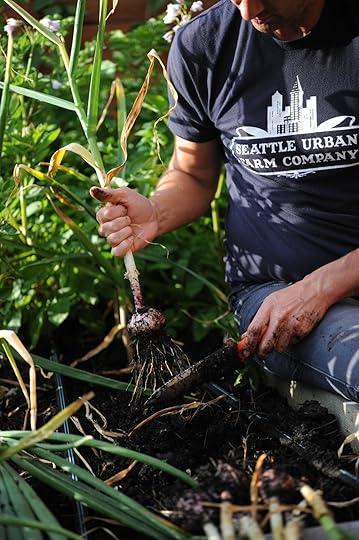

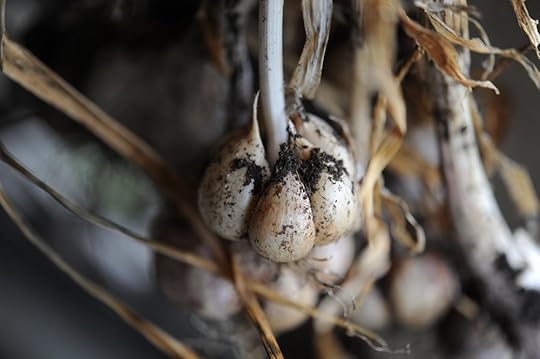
Important Take-aways:
Garlic is ready to be harvested when half of the stems have turned brown (half should still be green) and started to dry out.Onions are ready to harvest when the stems start to turn brown and die back. The tops will start to flop over and a portion of the bulb will usually be above the soil surface.Garlic and onions are harvested by lifting entire plant out of the ground with a spade, fork or trowel (or by hand). With both crops, the less you do to the harvested plant, the longer and better they will store.After harvesting, knock off any large clumps of dirt but never wash your garlic or onions with water.Hang garlic in a warm, dry, dark place for several weeks to cure. After that, the garlic stalk and root can be trimmed back to so that the bulb resembles one that you would buy at the store or farmers market.Cure onions in a dry sunny spot for 5-7 days. Once cured, cut back the stems to about 1 inch above the bulb.Store garlic and onions in a dark, cool location such as a pantry or basement. Softneck garlic should keep all winter long, while hardneck garlic has a shorter lifespan, but, some say, a superior flavor. The storage life for onions depends on the variety. Generally, yellow types store longest, but be sure to read about the varieties you are growing, or planning to grow before deciding which ones to cook with first. If properly cured and stored, it is possible to eat bulbing onions from midsummer through the following spring.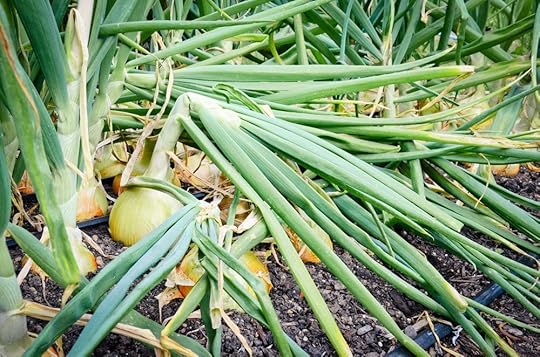

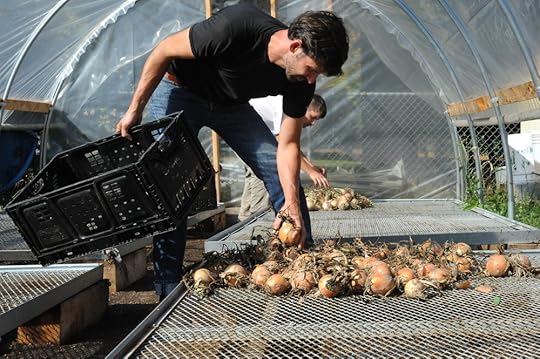
These are the reusable cotton bags I use to store my onions:
...and a garlic growers bible:
[image error] [image error] [image error] [image error]Like what you hear? Please share our podcast with a friend. Subscribe on iTunes or your favorite podcast player so you never miss a beat. And we'd really appreciate you showing us some love by leaving a rating and review on iTunes.
Have a topic you'd like see us dig in to? Leave us a note in the comment section below or #EBpodcast on Instagram and Twitter!
We need your support to keep make fresh, quality weekly content! Support us here:
Become an Encyclopedia Botanica Patreon
July 21, 2017
Encyclopedia Botanica Podcast, Episode 54: Fall Brassicas

The Brassica family includes crops like broccoli, cauliflower, kale, and kohlrabi, among others. These crops are cold-hardy, which makes them ideal for Fall gardens and in many cases, overwintering. The term ‘Fall Brassicas’ refers to crops that are planted anywhere between mid/late summer and early fall and are then harvested throughout the Fall.
HOW TO LISTEN:Subscribe in iTunes (or your favorite podcast player) to have our podcasts sent directly to your device.Listen right now in your browser by clicking above.SHOW NOTES:In this episode, we discuss:
Brassica crop lifespansPlanting requirements for FallCold hardiness considerationsHarvesting methodsImportant Take-aways:
There are 3 categories of Fall Brassicas: half-season crops that are transplanted, short-season crops that are transplanted, and short-season crops that are direct seeded.With all Fall brassicas, the goal is to get your plants in the ground with enough time for them to mature before shorter days and cooler weather set in.Half-season Fall brassicas include broccoli, kale, cabbage, and collards. These crops are generally planted mid-July through mid-August for a Fall harvest.Short season crops can take only 4-6 weeks to reach maturity, so you can plant these crops much later into the summer and in some cases in the Fall. Short season brassicas that should be transplanted include Kohlrabi, Tatsoi, and bok choi types.Other short season brassicas can be direct-seeded into the garden, including turnips, mustard greens, and mizuna. These crops can be planted later in the season than the half-season brassicas, and take even less foresight because they are happy when direct-seeded right into your garden beds.Many Fall brassicas will hold in the garden for weeks or months. Because the weather is cooler and the sun is waning, there is less pressure to harvest before plants bolt.Some crops, like broccoli, kale, and Tatsoi, can overwinter in the garden. If you live in an area that has winter regular temperatures below 30 degrees F, you can fashion simple hoops over your beds and cover them with remay to help protect the crops from harder frosts. (Both of our books Food Grown Right, In Your Backyard and High-Yield Vegetable Gardening include instructions and photos on how to do this!)

Don't forget to leave us a review on iTunes for your chance to win warm season salad green-inspired seed kit from Seattle Seed Co.! The kit includes two types of Purslane, Southern Giant Curled Mustard, Early Mizuna, Outredgeous Red Lettuce, Little Gem Lettuce and Australian Yellow Lettuce . We're giving away two of these kits and the two winners will be announced on next week's podcast, so leave us a review and stay tuned!
In addition to reviewing the podcast, all our listeners get 15% off your order at Seattle Seed Co. anytime using the code EBPODCAST.



Like what you hear? Please share our podcast with a friend. Subscribe on iTunes or your favorite podcast player so you never miss a beat. And we'd really appreciate you showing us some love by leaving a rating and review on iTunes.
Have a topic you'd like see us dig in to? Leave us a note in the comment section below or #EBpodcast on Instagram and Twitter!
We need your support to keep make fresh, quality weekly content! Support us here:
Become an Encyclopedia Botanica Patreon
July 14, 2017
Encyclopedia Botanica Podcast, Episode 53: Warm Season Salad Greens

Salad greens generally prefer to grow in cooler weather conditions, thriving in temperatures around 60 degrees fahrenheit. This makes them a great spring and early summer crop, but growing great greens can start to get tricky in the hottest months of the year and in areas that receive full, direct sun. Many salad greens tend to bolt quickly when the weather starts to warm up. During the hottest months of the year, it's important to choose types and varieties that will hold in the garden. This week we have Natalie Carver, from Love and Carrots, a DC-based edible landscaping company, to discuss warm weather salad greens with us.
HOW TO LISTEN:Subscribe in iTunes (or your favorite podcast player) to have our podcasts sent directly to your device.Listen right now in your browser by clicking above.SHOW NOTES:In this episode, we discuss:
Why growing salad greens in warm weather can be challengingLoads of tips and tricks for growing and harvesting salad greens in warm weatherOur favorite varieties of warm season greensImportant Take-aways:
Heat is definitely a stressor that causes plants to bolt, but another factor is hours of daylight.There are various strategies to successfully grow salad greens in warm weather and longer days, including:Finding a shady microclimate in your gardenUsing pelletized seeds for ideal spacingSelecting varieties that are heat-tolerantTo prevent bitterness, harvest in the morning, ideally before the sun reaches the leaves.The varieties we discussed on the episode include:New Red Fire: a reliable summer lettuce, great texture, red leaves with green at the baseAdriana: a butterhead/boston variety with leaves that are lightly foldedCoastal Star Romaine and Jericho Romaine: romaines in general are slower to bolt in warm weatherSummer Lettuce Mix: a cut-and-come-again varietyAsian Greens, including Mizuna and Joi ChoiGreen Wave: a broad leaf mustard greenPurslane: a cultivated, upright version of the common weed, with a crisp, almost cucumber-like flavor

Don't forget to leave us a review on iTunes for your chance to win warm season salad green-inspired seed kit from Seattle Seed Co.! The kit includes two types of Purslane, Southern Giant Curled Mustard, Early Mizuna, Outredgeous Red Lettuce, Little Gem Lettuce and Australian Yellow Lettuce . We're giving away two of these kits and the two winners will be announced on next week's podcast, so leave us a review and stay tuned!
In addition to reviewing the podcast, all our listeners get 15% off your order at Seattle Seed Co. anytime using the code EBPODCAST.
Like what you hear? Please share our podcast with a friend. Subscribe on iTunes or your favorite podcast player so you never miss a beat. And we'd really appreciate you showing us some love by leaving a rating and review on iTunes.
Have a topic you'd like see us dig in to? Leave us a note in the comment section below or #EBpodcast on Instagram and Twitter!
We need your support to keep make fresh, quality weekly content! Support us here:
Become an Encyclopedia Botanica Patreon
More about our special guest:

Natalie Carver is the horticulture director at Love & Carrots. Natalie's path into farming started on a cross-country bike tour of farms. This inspired her to start gardening intensively at university, and then spent two years farming in British Columbia. As horticulture director, she propagates the supply of vegetable, herb, and perennial seedlings that fill 140 gardens across DC. She is also a garden coach, teaching new and experienced gardeners how to grow their own food. To Natalie, the process from seed to harvest is a pace of life, and she celebrates working and eating with the seasons.
July 7, 2017
Encyclopedia Botanica Podcast, Episode 52: July Listener Q+A

This past month we rounded the corner into summer. By early summer, many gardens are pretty much planted out. This doesn't mean that we aren't continuing small successions of things like lettuce and cilantro, and that there wont be subsequent succession plantings happening later in the season, but it's a time of year when the gardens are generally starting to get pretty full with summer crops. Naturally, because of this, many of the questions we've been getting in our Slack group the past few weeks have been about pest and disease issues, harvesting, and pruning. This week we're going to disucss a question about leaf miners, a cauliflower harvesting dilmema, stunted greens beans and irregular sugar snap peas.
HOW TO LISTEN:
Listen right now in your browser by clicking above. Subscribe in iTunes (or your favorite podcast player) to have our podcasts sent directly to your device.SHOW NOTES:In this episode, we discuss:
Leaf minersHarvesting cauliflowerStunted green beansIrregular sugar snap peas[image error]
"Stunted" bush beans vs. a more robust planting

Important Take-aways:
Leaf miners are a small black fly. They lay tiny eggs on leaves and then the larvae from these eggs are what actually do the damage. There are several types of leaf miners, but they're damage tends to look pretty similar across the board. Leaf miner damage has two phases, early signs of the damage can look like small trails, but these quickly turn into a more blotchy shape and the infected area starts to look papery and almost translucent. We devoted an entire episode to leaf miners, so for more info, check out Episode 11.
Cauliflowers tend to take a little longer ( ~ 10 days, give or take) than broccoli to put on heads, so if you have these two Brassicas grouped together, your broccoli may be ready to harvest first. That's totally normal, and you'll probably want to leave your broccoli in the ground so it can produce side shoots anyway!
Stunted greens beans will generally still produce fruit. If the flowers and the leaves look healthy, but the plants are just a little small, I'd leave them in the ground to fruit and succession plant another batch somewhere else in the garden (see photo above).
Sugar snap peas are a open pollinated so if the breeder doesn't do a good job isolating the seed, you end up with all sorts of wonky variations like flat or small pods. To save your own pea seed, you need to seperate your plants from other pea varieties by at least 10 feet.
Great resources if you want to start saving your own seed at home:
[image error] [image error]
[image error]
 [image error]
[image error]

Like what you hear? Please share our podcast with a friend. Subscribe on iTunes or your favorite podcast player so you never miss a beat. And we'd really appreciate you showing us some love by leaving a rating and review on iTunes.
Have a topic you'd like see us dig in to? Leave us a note in the comment section below or #EBpodcast on Instagram and Twitter!
We need your support to keep make fresh, quality weekly content! Support us here:
Become an Encyclopedia Botanica Patreon
Patreon

Become a Patreon to support the Encyclopedia Botanica Podcast
Your support helps us produce timely, informative, and fun edible gardening content, including a weekly podcast and a growing online community. We're here to empower you in your edible gardening goals.
Together, we're changing the world, one garden at a time.
Join the Encyclopedia Botanica community of edible gardeners today!



